2006 Toyota Tundra Tires, Repair & Service
Get Started
Complete Auto Care for Your 2006 Toyota Tundra
-
TIRES FOR YOUR 2006 Toyota Tundra View Tire Info GET TIRE PRICING
-
REPAIR FOR YOUR 2006 Toyota Tundra View Repair Info SCHEDULE REPAIR
-
MAINTENANCE FOR YOUR 2006 Toyota Tundra View Maintenance Info SCHEDULE MAINTENANCE
-
OFFERS FOR YOUR 2006 Toyota Tundra Limited Time Tire Offers VIEW ALL COUPONS
2006 Toyota Tundra Tires
Recommended Tires | Tire Information
2006 Toyota Tundra Tires Sizes, Speed Ratings, and Inflation
Not sure about your 2006 Toyota Tundra tire size? Use the following chart to find information on tire size, speed rating, and inflation.
| Trim Level | Speed Rating | Inflation in PSI F/R | Tire Size |
|---|---|---|---|
| 2006 Toyota Tundra SR5* | S | 26 PSI/29 PSI | P265/70R16 |
| 2006 Toyota Tundra SR5* | S | 29 PSI/32 PSI | P265/65R17 |
| 2006 Toyota Tundra SR5* | S | 26 PSI/29 PSI | P265/70R16 |
| 2006 Toyota Tundra SR5* | S | 32 PSI/35 PSI | P245/70R16 |
| 2006 Toyota Tundra Limited* | S | 29 PSI/32 PSI | P265/65R17 |
| 2006 Toyota Tundra Limited* | S | 26 PSI/29 PSI | P265/70R16 |
| 2006 Toyota Tundra Base* | S | 26 PSI/35 PSI | P245/70R16 |
| 2006 Toyota Tundra Base* | S | 26 PSI/29 PSI | P265/70R16 |
|
2006 Toyota Tundra SR5* Speed Rating: S Inflation F/R: 26 PSI/29 PSI |
|
2006 Toyota Tundra SR5* Speed Rating: S Inflation F/R: 29 PSI/32 PSI |
|
2006 Toyota Tundra SR5* Speed Rating: S Inflation F/R: 26 PSI/29 PSI |
|
2006 Toyota Tundra SR5* Speed Rating: S Inflation F/R: 32 PSI/35 PSI |
|
2006 Toyota Tundra Limited* Speed Rating: S Inflation F/R: 29 PSI/32 PSI |
|
2006 Toyota Tundra Limited* Speed Rating: S Inflation F/R: 26 PSI/29 PSI |
|
2006 Toyota Tundra Base* Speed Rating: S Inflation F/R: 26 PSI/35 PSI |
|
2006 Toyota Tundra Base* Speed Rating: S Inflation F/R: 26 PSI/29 PSI |
* Note: these models have different tire sizes depending on vehicle options.
Recommended Tires for Your 2006 Toyota Tundra
What tires are best for a 2006 Toyota Tundra? Check out the following tire brands and types.
 Blizzak DM-V2
Blizzak DM-V2
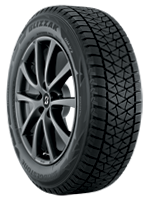
- No warranty
- Winter
- Winter
 ALENZA AS ULTRA
ALENZA AS ULTRA
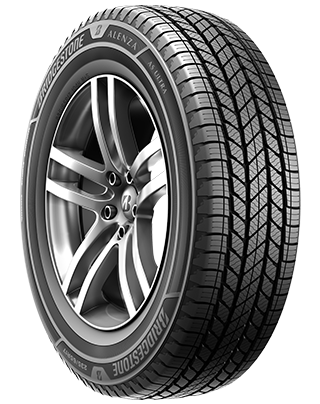
- No warranty
- All-Season
- Light Truck Tires
 Dueler A/T Revo 3
Dueler A/T Revo 3
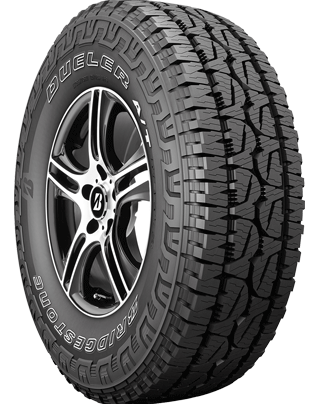
- Platinum Pact Limited Warranty
- All-Season
- Light Truck Tires
 Dueler H/T 684 II
Dueler H/T 684 II
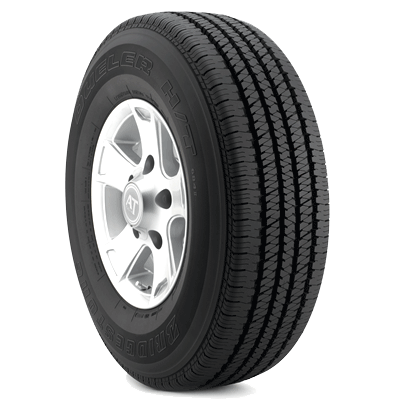
- Platinum Pact Limited Warranty
- All-Season
- Light Truck Tires
 Destination A/T2
Destination A/T2
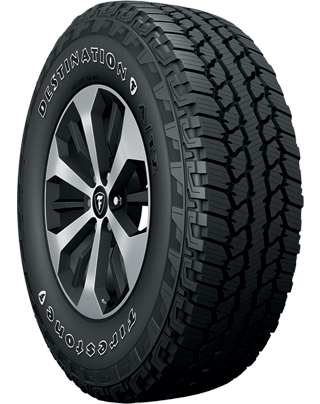
- Gold Pledge Limited Warranty
- All-Season
- Light Truck Tires
 Destination LE3
Destination LE3
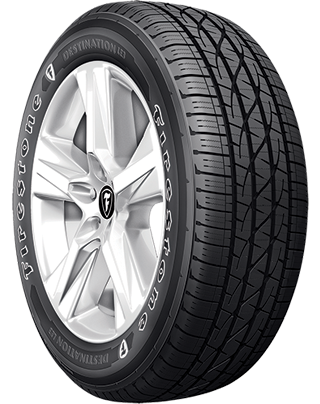
- No warranty
- All-Season
- Light Truck Tires
 Winterforce 2 UV
Winterforce 2 UV
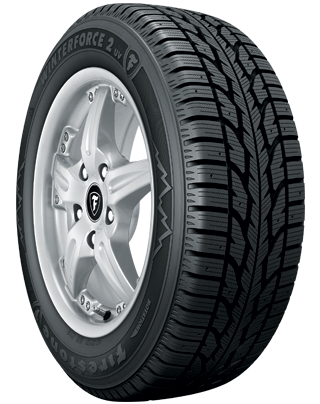
- No warranty
- Winter
- Winter
 Destination X/T
Destination X/T
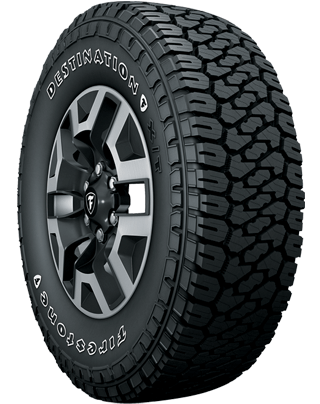
- Gold Pledge Limited Warranty
- All-Season
- Light Truck Tires
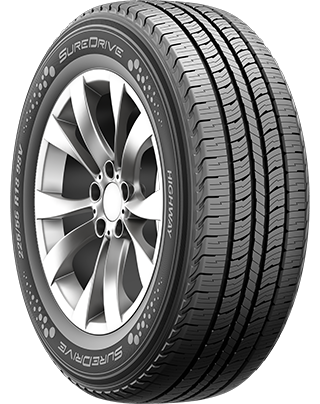
- No warranty
- All-Season
- Light Truck Tires
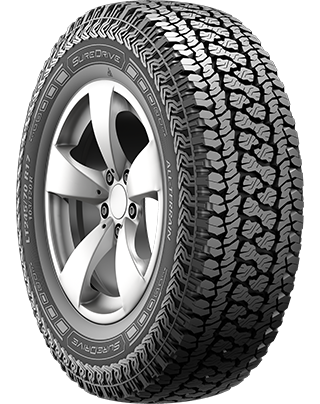
- No warranty
- All-Season
- Light Truck Tires
 OPEN COUNTRY A/T III
OPEN COUNTRY A/T III
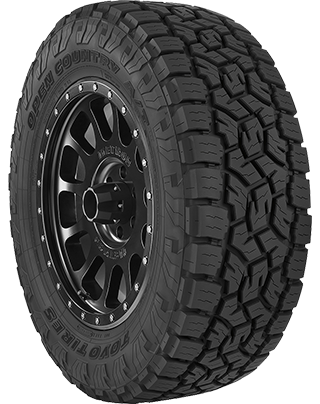
- No warranty
- All-Season
- Light Truck Tires
 OPEN COUNTRY HTII
OPEN COUNTRY HTII
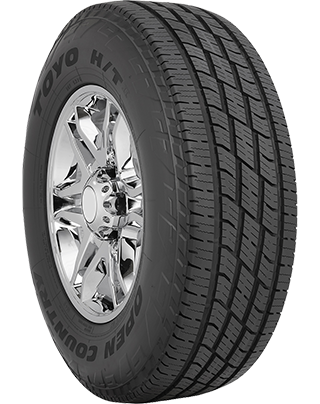
- No warranty
- All-Season
- Light Truck Tires
About 2006 Toyota Tundra Tires
Other than getting the proper tire size, you also want to consider a handful of other factors when buying new Toyota Tundra tires like where and how you drive, and what tire brand you trust most. When evaluating your driving conditions, think about where you live (countryside vs. city vs. mountains) and the kind of unexpected weather you're likely to experience. Drivers in states that fully experience all four seasons often buy two sets of tires: one for winter and one for summer. Other drivers prefer to purchase one all-season set to limit trips to the tire shop and make sure their vehicle is prepared in the rain, sleet, snow, or sun!
Your personal driving style is the next factor to consider. If you're a big off-roading fan who forges paths where others can't, you have very different needs than a long-distance commuter who sticks to the highway. Talk to a tire technician at Firestone Complete Auto Care for help choosing the best tire for you, or start shopping for Toyota Tundra tires online.
2006 Toyota Tundra Tire Installation & Rotation
Firestone Complete Auto Care installs more tires on more cars than most other companies. We're your tire shop and a complete service center for tire installation, maintenance, repair, rotation, and alignment! Buy 2006 Toyota Tundra tires online and schedule your installation when it's convenient for you.
2006 Toyota Tundra Tire Q&A
-
Why does Toyota tire inflation matter? A small decrease in tire pressure can have a big impact on your driving. Maintaining proper tire pressure can help improve braking time, increase fuel economy, and boost tire lifespan.
-
Why are there numbers on the side of my Toyota Tundra tires? The numbers on your tire sidewall give you information about tire speed rating, traction, treadwear, tire size, and load carrying capacity. Chat with a tire technician to learn how to read the numbers on your Toyota tires!
-
How do I check the tread depth on my Toyota tires? Stay on top of your tire tread depth to help avoid a dangerous drive. You can check tread depth with a penny. Hold the penny so that Abraham Lincoln is facing you, then place your penny into a tread groove upside down. If you can see the top of Abe’s head, your tread is shallow and it might be time for new Toyota Tundra tires. Grab a penny. Hold the so that Abe Lincon's head is facing you and his hair is pointing toward the ground. Then, place the penny into a tread groove. If you can see the top of Abe’s head, your tread is shallow and it might be time for new Toyota Tundra tires.
2006 Toyota Tundra Repair
Want more details? Choose a service below to read more about Toyota Tundra repairs at Firestone Complete Auto Care.
2006 Toyota Tundra Repair Information
Car repairs: for many drivers, that phrase is a dreadful one. We’re here to change that, though. At Firestone Complete Auto Care, we want to make car repair painless and hassle-free. When it’s time for 2006 Toyota Tundra repair services, head to your nearest Firestone location and our skilled repair technicians will get your Tundra back on the road. We’ll start by assessing what repairs may be needed, and we’ll provide you with a detailed explanation of what we recommend. We’ll never recommend a repair we don’t think is necessary for your safety or the performance of your Toyota.
How Much Does Toyota Tundra Repair Cost?
The cost to repair your 2006 Toyota Tundra depends on which repairs are needed, the cost of any replacement parts, the amount of labor necessary to get the job done, and where you live. No matter what state you’re in, be sure to look through our offers and online coupons for repairs.
A few different aspects can influence repair costs for your 2006 Toyota Tundra, like
2006 Toyota Tundra Auto Repair Q&A
-
Do I need to follow Toyota's maintenance schedule? One of the best ways to prevent 2006 Toyota Tundra repairs is by staying on top of your Toyota maintenance schedule. This schedule is written by the people who made your vehicle and they know best how to keep it running smoothly.
-
What's wrong if something feels 'off' in my Toyota? No, we’re not talking about finding the best jams on the radio! You know your car best, and you’re the first person who will notice if something doesn’t feel right (like new smells, sights, or sounds coming from your car). If you sense that something is 'off,' stop in for a Courtesy Check to have these symptoms checked out ASAP. Early action could help you prevent Toyota Tundra repairs.
-
Why do you recommend certain repairs for my Toyota? Talk to your technician. We'll never recommend a service or repair for your 2006 Toyota Tundra that we don't think is necessary for your safety.
2006 Toyota Tundra Brake Repair
Your Toyota Tundra may be powered by a strong engine. But if you can’t brake, it might as well be scrap metal. Don't wait if you're experiencing brake squeaks or a loss of braking power. Safe driving and responsive brakes go hand in hand. Plus, waiting can lead to more expensive parts wearing out and requiring replacement. Go to your local Firestone Complete Auto Care for 2006 Toyota Tundra brake repairs. We offer many affordable brake repairs like brake pad/shoe removal and replacement, brake rotor/drum refinishing, brake fluid exchange, and wheel cylinder and brake caliper installation.
Answers to Your Tundra Brakes Questions
-
What can cause my Tundra to shake when I apply the brakes? If your Tundra shakes when you brake, you could be dealing with warped rotors, faulty brake calipers, worn brake pads or rotors, or loose or worn suspension parts. Schedule a free brake inspection at Firestone Complete Auto Care for help diagnosing your brake issue.
-
What is the average lifespan of Tundra brake pads? You can usually get around 30,000 to 40,000 miles out of your brake pads, but how and where you drive your Tundra can affect this. Hauling large loads or riding your brakes can shorten their lifespan, while smoothly braking and mostly sticking to highways can help your brake pads last longer.
-
Can brake fluid leak when my Tundra is off? Your Tundra brake system is a closed hydraulic system, which means that the brake fluid should not leak out of the system under normal circumstances. However, over time, the various components of the brake system can wear out or become damaged, which can cause brake fluid to leak out of the system.
Repairing Your Toyota Tundra Drivetrain
Drivetrains for front, rear, and all-wheel-drive and 4WD vehicles are not all the same. You don't want to go to any random shop for drivetrain repair. You want to go to Firestone Complete Auto Care. We can take care of most 2006 Toyota Tundra drivetrain components Your Tundra might need driveshaft repair if you notice resistance when turning, heavy vibrations in your floorboards, clunks when shifting, or vibration as your vehicle accelerates.
2006 Toyota Tundra Drivetrain Q&A
-
What are the symptoms of a damaged Toyota drivetrain system? Noises toward the back of your Toyota Tundra, leaking fluid, trouble turning — these could all be signs of drivetrain damage you want to address. Take action before something more severe happens.
-
Why is my Tundra malfunction indicator light (MIL) on? If your Tundra has its malfunction warning light (more commonly called the check engine light) illuminated, it could indicate engine troubles, problems with the transmission, electrical issues, malfunctioning sensors, connector problems, or misfire issues.
-
Is a drivetrain malfunction in my Tundra serious? A drivetrain malfunction in your Tundra should never be taken lightly. Driving with a malfunctioning drivetrain can put you in danger and lead to further vehicle damage, so it's essential to have a qualified mechanic assess and repair the problem as soon as possible.
2006 Toyota Tundra Wheel Alignment
An alignment involves making adjustments to your Toyota Tundra's suspension system, which serves to attach your wheels to your vehicle. When your car has an alignment service, your tire angles are adjusted according to measurements recommended by Toyota. Why? So that your tires can make contact with the road at the best possible angle. Before we adjust the alignment of your 2006 Toyota Tundra, we’ll start by checking the current alignment angles. Then, we’ll adjust the angles as needed until they match recommended measurements from Toyota.
Answers to Toyota Tundra Alignment Questions
-
What can knock my Toyota Tundra out of alignment? Potholes and uneven roads can knock your car out of alignment, so stay aware of the road ahead and adjust your speed (or avoid these obstacles whenever it’s safely possible).
-
How frequently should you get a wheel alignment for your Tundra? It’s usually suggested you check your alignment about every 6,000 miles or 6 months (whichever occurs first). Still, you should reference your Tundra owner’s manual for Toyota's recommended interval.
-
Do you need to get your Tundra wheels aligned when you get new tires? It’s not mandatory to get an alignment after installing new tires on your Tundra, but it can be a smart decision! Proper alignment from the jump can help improve handling, fuel efficiency, and tire wear.
Engine Repairs for Your 2006 Toyota Tundra
If your 2006 Toyota Tundra needs engine repair, our technicians will make sure you understand what’s going on before they start working on your engine. We make recommendations, but you make the final decision. If a repair can wait, we'll let you know. We'll also tell you if it's necessary for your safety. We want to give you all the details you need to make an informed decision about your engine repairs. Turn to Firestone Complete Auto Care for your 2006 Tundra engine repairs and you can feel good knowing that we only use Toyota-compliant replacement parts such as the timing belt, oil gasket, sensors, or other parts.
2006 Toyota Tundra Engine Q&A
-
Why does my Tundra’s check engine light come on when I start it? Generally, your check engine light turning on upon ignition is not a bad thing. It’s just your Tundra firing up its circuits. The light should turn off in a bit, but come see us if it doesn't.
-
Are Toyota Tundra engine noises bad? Strange engine sounds can be a sign something’s off in your Toyota Tundra. Knocking or tapping could be a symptom of low oil. A high-pitched whistle could signal an intake leak or misaligned belt. Squealing can be traced back to a loose fan belt, and grinding might be a sign of brake problems rather than engine issues.
-
What could damage a Toyota engine? Certain driving habits can hurt your engine. These habits include driving on an empty fuel tank, revving your engine while the vehicle is in Park, or slamming the gas pedal while the engine is still cold. Steer clear of these habits to help protect engine performance and efficiency.
Get Your Toyota Tundra Tire Repaired
If your 2006 Toyota Tundra is in need of a tire inspection or possible flat tire repair, Firestone Complete Auto Care has your back. There’s a chance your tire could be plugged and patched (rather than replaced). Our technicians can inspect your tire and let you know if it is safe to repair. To start, we’ll consider the location of tire damage, the type of issue, the size and scope of the damage, and the amount of wear on your tires.
If we determine that your 2006 Toyota Tundra tire can be safely repaired, we'll follow three basic steps to repair it: (1) Separate the tire from the vehicle wheel, (2) fill in the area that’s been punctured to prevent damage from moisture, and (3) secure and seal the inner tire liner to ensure the tire is airtight.
Toyota Tundra Tire Repair Questions
-
What happens if I drive my Toyota on a flat tire? A flat tire that’s not addressed can take a terrible toll on the rest of your car. Until you have it repaired or replaced, drive your Tundra as little as possible to reduce your risk of damage to the wheels and alignment – or further damage to that already struggling tire!
-
Will a temporary sealant fix my Toyota's flat tire? A temporary sealant may be able to help you get to a repair location safely. But temporary or emergency sealants could possibly damage TPMS sensors, and in some cases may even void the warranty on your Bridgestone or Firestone tires. If your tire needs extensive repair, sealant can add time and labor costs to the process.
-
Why do my Tundra tires keep losing air? Possible reasons for your Tundra tires continuously losing air include a leaking valve steam, wheel damage, and a puncture or hole in the rubber.
2006 Toyota Tundra Maintenance
Take care of your Toyota Tundra and it'll take care of you. With the right maintenance at the right time, your Tundra has a good chance of hitting 200,000 miles or more.
2006 Toyota Tundra Maintenance Information
Instead of waiting for an issue to arise with your Tundra, you can stay ahead of problems before they even begin. Rely on the recommended maintenance schedule that’s been created just for your 2006 Toyota Tundra! The recommended maintenance schedule is put together by Toyota, your vehicle manufacturer. Scheduled maintenance services can vary depending on driving conditions, climate, and other factors; however, recommended maintenance usually includes services like fluid exchanges, filter changes, new brake pads, oil changes, and tire rotations. Staying on track with routine service appointments can help your Tundra perform better, keep you safer on the road, and help you avoid expensive repairs caused by 2006 Toyota Tundra problems later.
Overview of Essential Toyota Tundra Maintenance Needs
Bring your 2006 Toyota Tundra to Firestone Complete Auto Care for factory-recommended maintenance services and a skilled technician will start the appointment with a Courtesy Check. A Courtesy Check helps "set the stage" for your service and catch any small problems before they turn into big repairs. Each Courtesy Check includes a free battery test and an inspection of your Tundra's windshield wiper blades, head and tail lights, filters, fluid levels, tires, and alignment.
Firestone Complete Auto Care is the place to go for 2006 Toyota Tundra maintenance. We can help you keep your vehicle (and your life!) running smoothly. Many of our locations have weekend and evening hours for your convenience.
2006 Toyota Tundra Maintenance Q&A
-
What should I do after hitting a pothole in my Toyota Tundra? Watch out for pothole damage. If your 2006 Tundra is pulling to one side or the other, your tires or suspension system could be calling out for help.
-
When should I use high mileage oil in my Toyota Tundra? Do you have more than 75,000 miles on your Toyota Tundra? If so, request to switch to high mileage oil at your next oil change. This type of oil is specially formulated to keep aging engine parts in the best possible condition.
-
Can I ignore dashboard lights on my Toyota? Because there might be a problem under the hood. Those warning lights are there for a reason! As soon as you notice that one’s illuminated, take your Toyota Tundra to Firestone Complete Auto Care so you can address any small problems long before they worsen.
Battery Size & Replacement for 2006 Toyota Tundra
Not sure what battery to get for your Toyota Tundra?
| Battery | Engine | Warranty | Cold Cranking Amps | |
|---|---|---|---|---|
| 24F-3 | V6/4.0L | Replacement 24 months | Performance months | 650 |
| 24F-6 | V6/4.0L | Replacement 36 months | Performance months | 750 |
| 24F-RP | V6/4.0L | Replacement 48 months | Performance months | 750 |
| 27F-3 | V8/4.7L | Replacement 24 months | Performance months | 710 |
| 24F-6 | V8/4.7L | Replacement 36 months | Performance months | 750 |
| 24F-RP | V8/4.7L | Replacement 48 months | Performance months | 750 |
2006 Toyota Tundra Car Batteries
The average car battery lasts three to five years. You want to replace your 2006 Toyota Tundra battery before it fails and leaves you stranded. Watch for signs that your current battery is getting too old or too weak. A sluggish engine start, an illuminated check engine light or battery signal, swollen battery case, corrosion-covered posts, or dim headlights can all signal that your battery is on its last leg.
Or, you can get a complimentary battery check at your nearest Firestone Complete Auto Care. Stop by for a free battery test and, if needed, a replacement battery for your 2006 Toyota Tundra. Automotive batteries are just one of our many areas of expertise. Our expert technicians understand Toyota service recommendations for Tundra car batteries’ reserve capacities and cold cranking amps. Get help choosing the battery size that's best for your Tundra, and schedule an appointment today for a quick car battery replacement.
Commonly Asked Toyota Tundra Battery Questions
-
Why doesn’t my Toyota Tundra battery stay charged? A battery that won't hold a charge is almost as good as dead. The battery might be old. Or, you may have a habit of leaving your car doors open and the lights on overnight. Stop by for a free battery test at your local Firestone Complete Auto Care to learn more about the state of your battery.
-
What is the average lifespan of a car battery? The typical 12-volt car battery may last three to five years, depending on the type of battery, the driving conditions, and how well the battery is maintained.
-
Why is there white, flaky stuff around my Tundra’s battery post? The white, crusty stuff that can accumulate around Tundra car battery terminals is called corrosion. It is caused by a chemical reaction between the battery acid and the air, which creates a white, powdery substance that can build up on the terminals over time. Corrosion can interfere with the flow of electricity between the battery post and the car's electrical system, sometimes leading to poor electrical performance, difficulty starting, and even premature battery failure.
2006 Toyota Tundra Oil Changes
Toyota recommends changing your 2006 Tundra’s oil at regular intervals. Your Tundra may need an oil change right away if your check engine/oil change light is on, you hear knocking sounds coming from the engine, smell oil inside the car, or notice excess vehicle exhaust. You might need an oil change more frequently than what’s recommended by Toyota if you regularly haul heavy loads, drive in dusty terrain, go off-roading a lot, or drive at low speeds for long distances.
Your local Firestone Complete Auto Care has the right 2006 Toyota Tundra motor oil: either synthetic or conventional. Check your owner's manual and talk with a technician to select the right Toyota Tundra oil, whether it's Quaker State® Advanced Durability™ conventional oil, Pennzoil® High Mileage Vehicle® motor oil, Pennzoil Platinum® Full Synthetic motor oil with PurePlus™ Technology, or Shell Rotella® heavy-duty engine oil. During your oil change service, a technician will change your Tundra's oil, replace and recycle your used oil and oil filter, check all of your other filters, refill vital car fluids, and perform a free inspection on the rest of your vehicle. Make an appointment for an oil change service today and let the oil experts take care of your Tundra's engine.
2006 Toyota Tundra Oil Change Q&A
-
Why is my Toyota Tundra oil light illuminated? Your Toyota Tundra oil change reminder light might illuminate if it’s been too long since your last oil change. On the other hand, the oil pressure light might illuminate due to a clogged oil filter, a faulty oil pressure sensor, low engine oil levels, or a malfunctioning oil pump.
-
Can I change my Toyota Tundra oil at home? Changing your own oil isn't as convenient as you might think. It requires special tools and old oil must be disposed of properly. Having your oil professionally changed reduces the chances of something going wrong with the oil change, but also with your vehicle down the road.
-
Why is my Toyota exhaust smoke gray or blue? You could have an oil leak and have a case of burning oil. Looks like it’s time for a professional to take a look. The leak could be the result of worn valve seals, fried piston rings, or old cylinder walls.
Engine Tune-Up Service for Your 2006 Toyota Tundra
Periodic tune-ups can bring more power back to your Tundra’s engine. The Firestone Complete Auto Care location in your community offers several Toyota Tundra engine tune-up services. The first is the standard Firestone Tune-Up. The standard Firestone Tune-Up includes new spark plugs (and installation!), a thorough inspection of engine components, and a lifetime parts warranty*. Another service option pays special attention to the filters in your Tundra. Specifically, we replace the fuel filter and air filter. Yet another service is a fuel system cleaning process, which involves removing varnish, dirt, and carbon deposits that have built up inside the fuel injectors, throttle body, and throttle plate in your Tundra. The result? Restored fuel system performance. Here’s something to remember when choosing services: the mileage and service history of your Tundra can determine what kind of service it needs. Ask one of our technicians what your vehicle needs, based on your driving habits and your car’s current condition.
*Ask a Firestone Complete Auto Care teammate about full terms and conditions for warranties.
2006 Toyota Tundra Engine Tune-Up Q&A
-
What happens if my Toyota Tundra spark plugs fail? Replace spark plugs on time or about every 30,000 miles or so. Without the spark of electricity created by spark plugs, your engine doesn’t have the combustion it needs to start — which could leave you stranded on the road. Always replace your spark plugs on time based on Toyota’s recommendations.
-
What does a puddle underneath my Toyota Tundra mean? Puddles could indicate an oil leak, coolant leak, or brake fluid leak– all of which can critically hurt your engine. Have your engine inspected as soon as you spot a pool of liquid in your usual parking spot.
-
How frequently do the fuel injectors in my Toyota Tundra need to be cleaned? The frequency at which car fuel injectors should be cleaned can vary depending on several factors, including the type of fuel used and the driving conditions. Some manufacturers generally recommend a fuel system cleaning as part of your general car maintenance, or as needed based on symptoms of poor fuel system performance.
2006 Toyota Tundra Suspension Service & Repair
When you first drove your 2006 Toyota Tundra, you probably enjoyed a smooth and steady ride. But these days, things are starting to feel a bit rough. Perhaps your Tundra feels bouncy, sways to one side, or makes noise whenever you turn or drive over a speed bump. The first sign of trouble is the best time to bring your 2006 Toyota Tundra in for steering and suspension services. We'll get to the root of the problem and, if your car needs steering and suspension repairs, we’ll explain what your car needs and how much it’ll cost to get it done. We won't begin any work without your permission.
Questions About 2006 Toyota Tundra Steering & Suspension
-
What can cause my Toyota Tundra to have a bouncy ride? If it feels like you’re on a trampoline every time your Tundra goes over a bump or dip, you may have a problem with your struts or shocks. Faulty shocks and struts can’t properly absorb road bumps, leading to a bouncy ride.
-
What can cause the front end of my Tundra to dip forward when I apply the brakes? When you brake, the forward momentum combined with your vehicle's weight sends a lot of force to the vehicle's front end. A bad suspension can cause all that weight and force to push the front end downward.
-
Does tire pressure and tread depth impact my Toyota's suspension? Keeping your tires properly inflated can help reduce strain on the suspension, and also help you notice when you need new tires. A tire that doesn't have an adequate amount of tread can't grip the road or function as well as the manufacturer intended.
A/C Service for Your 2006 Toyota Tundra
Technicians at Firestone Complete Auto Care are ready to help you address your 2006 Toyota Tundra A/C problems. During an A/C performance check, we'll determine the condition of your 2006 Toyota Tundra A/C system to determine whether repair work is needed. We’ll test overall system performance, check for any leaks, and measure the system pressure.
While your 2006 Toyota Tundra’s air conditioner is being serviced, we’ll also do an A/C evacuation and recharge. To do this, one of our technicians will remove the refrigerant in your A/C system (if there is even any left to remove). Then, they’ll use Toyota’s specifications to evacuate the system. Finally, we’ll recharge the A/C system with new refrigerant.
Questions About 2006 Toyota Tundra A/C Systems
-
Why do I get hot air from my Tundra A/C? If your car’s air conditioning isn’t blowing cold air at all (or it tries, then turns warm), you could have a clogged expansion valve, a faulty compressor clutch, a leak, or a malfunctioning fuse in the system.
-
How does my A/C system get a leak? To put it simply, age and moisture are some of the main causes of leaks in your A/C. Over time, rubber gaskets and seals can wear out, which pushes much-needed refrigerant out of your Tundra’s A/C system — and lets outside moisture get in, which can take a toll on internal A/C components.
-
What is causing my Tundra’s A/C to only work when the car is in motion? A problem with one or more of your air conditioning or electrical system components could cause the A/C to only work when your Tundra is moving. You may be low on refrigerant, or the cooling fan could be faulty.
Transmission Services for 2006 Toyota Tundra
The transmission delivers power from the motor to your wheels so that you can drive at your desired speed. Because your transmission is responsible for converting the right amount of power into the right amount of speed, a small transmission issue can put a big dent in your Tundra’s performance. 2006 Toyota Tundra transmission issues could include shifting delays, jumping or grinding during acceleration, the car shaking on the road, or whistling noises or a burning smell coming from beneath the hood. If you ignore Toyota Tundra transmission issues your could suffer a loss in fuel efficiency or find that you can't drive your Tundra at all. Our technicians know how to service your 2006 Tundra up to Toyota-recommended standards. As soon as you suspect something’s wrong with your Tundra’s transmission, book an appointment at your local Firestone Complete Auto Care to help keep your Toyota running for miles and miles.
2006 Toyota Tundra Transmission Questions & Answers
-
Does my Tundra's transmission fluid need to be inspected? Caring for your Toyota Tundra’s transmission fluid is a great way to help it perform. About every 30,000 to 60,000 miles is a good timeframe for having your transmission fluid inspected and perhaps changed. Service intervals can vary depending on how you use your Toyota, so check with your technician first. Luckily, leaks and low fluid levels are easy to spot and inexpensive to fix.
-
Can Toyota Tundra transmission fluid leak? Over time, transmission fluid can leak from your Toyota Tundra, potentially causing transmission problems. A transmission fluid leak may be caused by a damaged transmission pan, faulty transmission cooler lines, worn-out seals, a cracked transmission housing, or an overfilled transmission.
-
Can I still drive my Toyota Tundra if it has a transmission fluid leak? Driving your Tundra with a transmission fluid leak is highly discouraged. Transmission fluid is vital to the smooth operation of your transmission system, and a leak can put the entire system at risk. A transmission fluid leak may lead to decreased performance, overheating, and possibly even transmission failure.
2006 Toyota Tundra Inspections
Every service performed at Firestone Complete Auto Care includes a multi-point Courtesy Check. To start, one of our technicians will check the battery in your Toyota Tundra to see how much charge it has left – and determine if it may fail in the near future. The check will continue with a visual inspection of your Toyota Tundra's windshield wiper blades, lights, filters, hoses, alignment, tires, fluid levels, and belts.
While every visit to your local Firestone Complete Auto Care includes a Courtesy Check, you can also request a Complete Vehicle Inspection for your 2006 Toyota Tundra if you suspect there may be a bigger problem. In addition to a visual check of everything that's included in a Courtesy Check, a Complete Vehicle Inspection also includes a thorough manual inspection of your exhaust system, steering and suspension, and brakes. This inspection is aimed at informing you of any major problems that could wreak havoc on your 2006 Toyota Tundra if left unaddressed.
Depending on your location, you may be able to take care of your state inspection or safety test at your local Firestone Complete Auto Care. Specific requirements for these types of inspections vary by state.
Common 2006 Toyota Tundra Vehicle Inspection Questions
-
How do I know if my Toyota Tundra needs a check-up? It needs a check-up if something feels 'off' to you, the driver. Your Toyota Tundra could benefit from a Courtesy Check if it has any illuminated dashboard lights, you hear weird noises coming from any part, the engine doesn't start sometimes, or your vehicle pulls to one side.
-
My 2006 Toyota Tundra failed the state inspection test. Can you fix it? Don’t panic! Come in for a complete inspection today and we’ll find (and repair) the root cause before you have your vehicle retested.
-
When’s the best time to have a complete vehicle inspection performed on my Toyota Tundra? The best time to have a complete vehicle inspection done on your Toyota Tundra is when you notice something is off but you can’t locate the issue yourself. Schedule an inspection if you experience any unusual symptoms, such as unfamiliar dashboard indicators, strange engine noises, or steering changes. An inspection can be especially beneficial before a road trip for the simple peace of mind. You can feel confident in your adventure!
2006 Toyota Tundra Radiator Service
Keeping up with regular radiator maintenance in your 2006 Toyota Tundra is crucial to keep your engine in the best possible shape for years to come. Toyota recommends that you replace coolant (also called antifreeze) at certain intervals, but it’s a good idea to keep your eyes open for any indication that your radiator is failing. You could be on the verge of a radiator-induced engine breakdown if you notice a low coolant light or higher-than-normal engine temperatures on your dashboard, or if you spot coolant leaks coming from your car.
At Firestone Complete Auto Care, we start by performing a thorough inspection of your Toyota Tundra cooling system. We then do a machine-powered radiator exchange, replenish flushed chemicals, sealants, and lubricants, and then pressure check for leaks. If you’re about to lose your cool over a too-hot engine, rest assured that we’re here to give your 2006 Toyota Tundra the top-notch service it needs.
Questions About Toyota Tundra Radiators
-
What does the coolant light on my Toyota dashboard mean? Your engine might be about to overheat. If your low coolant light is on, pull over in a safe area and wait for your engine temperature to go down. Once it’s safe to do so, bring your car to your nearest Firestone Complete Auto Care to have the coolant system inspected.
-
What can cause my Tundra to overheat? Your Toyota Tundra engine could overheat due to low coolant, a clogged radiator, a damaged water pump, a malfunctioning cooling fan, or a faulty thermostat.
-
Why does the radiator in my Tundra sound like it’s rumbling or boiling? Your Tundra’s cooling system could contain air pockets or your radiator might be clogged. Another possibility is a faulty radiator cap, which is an easy fix!